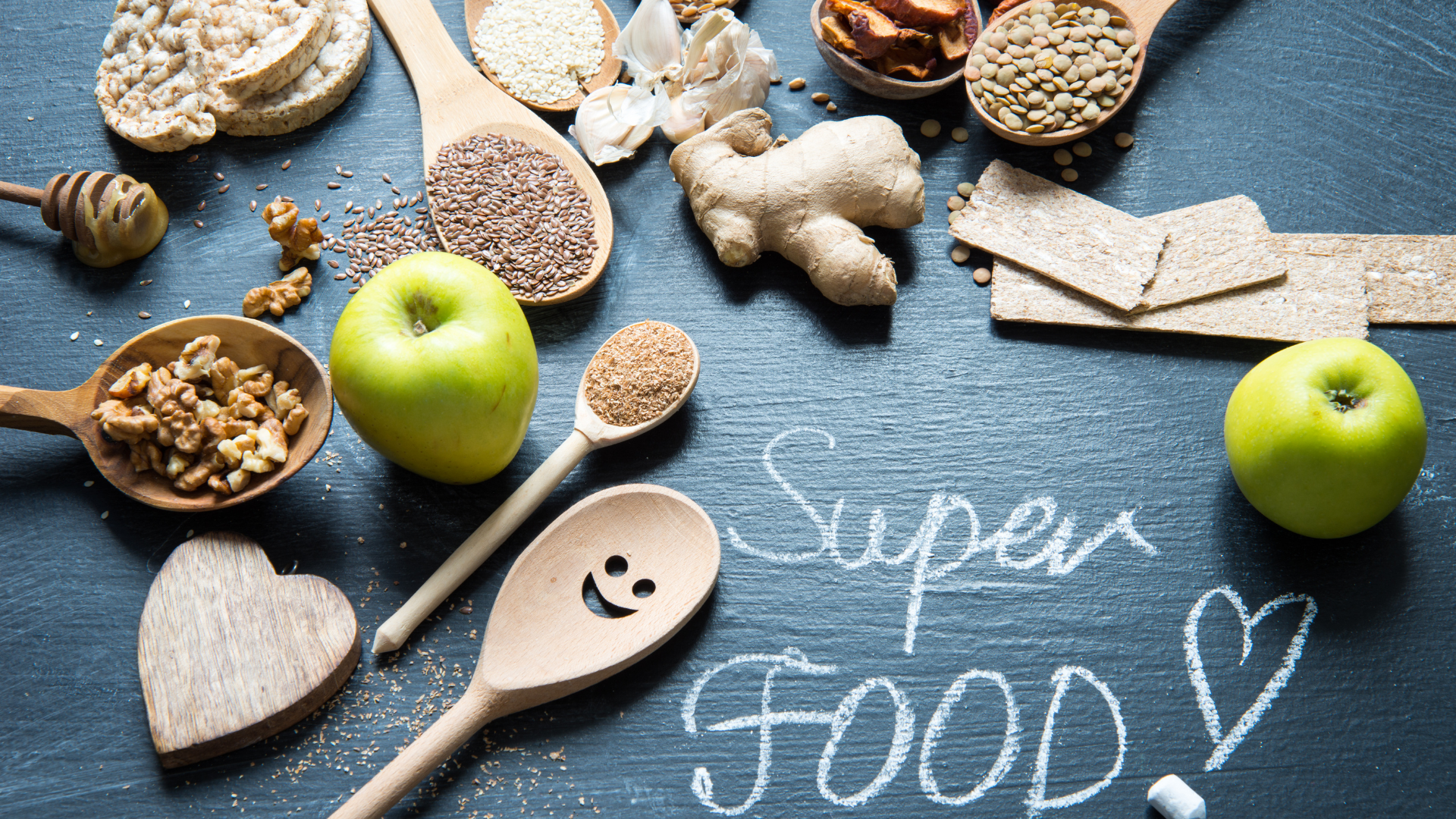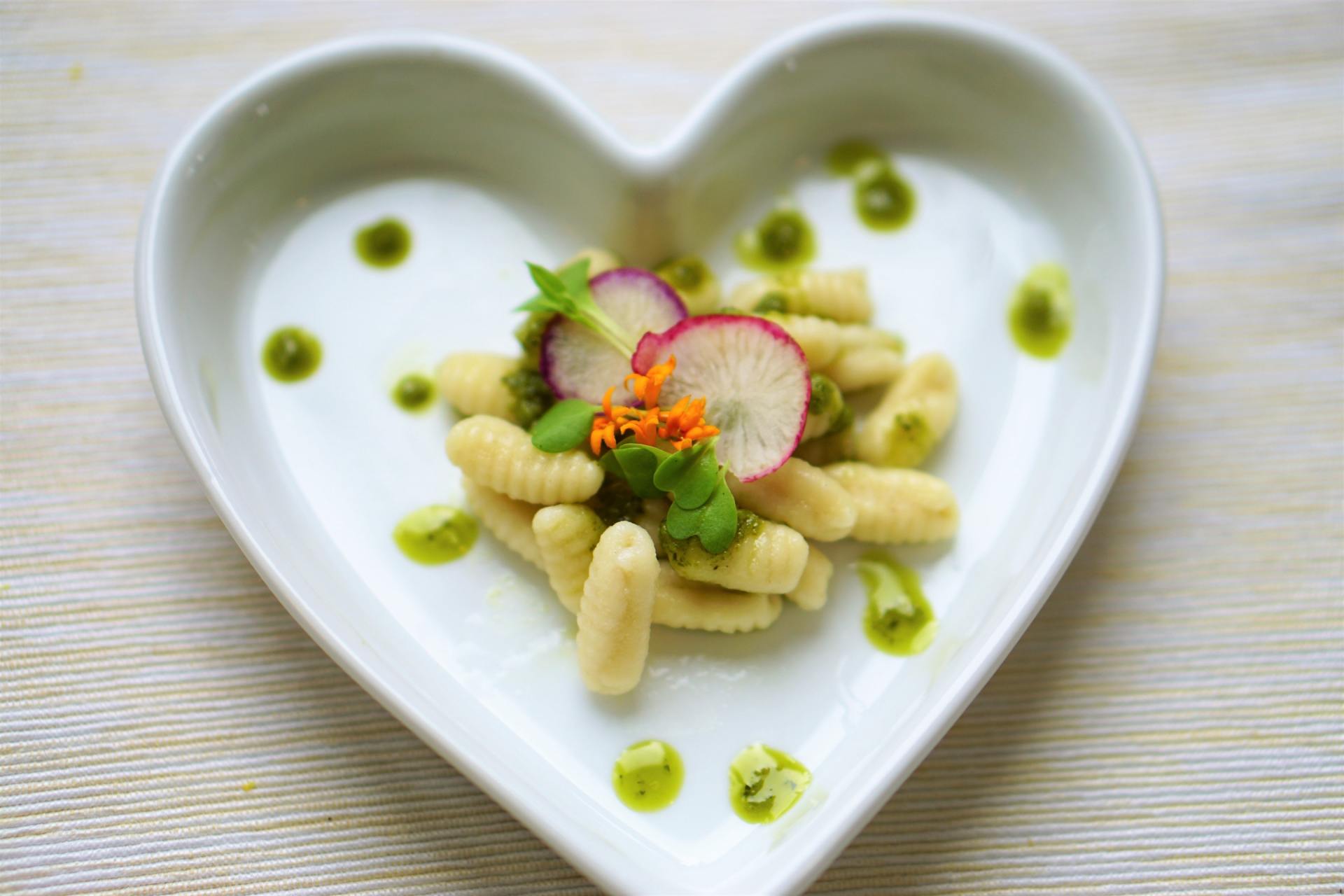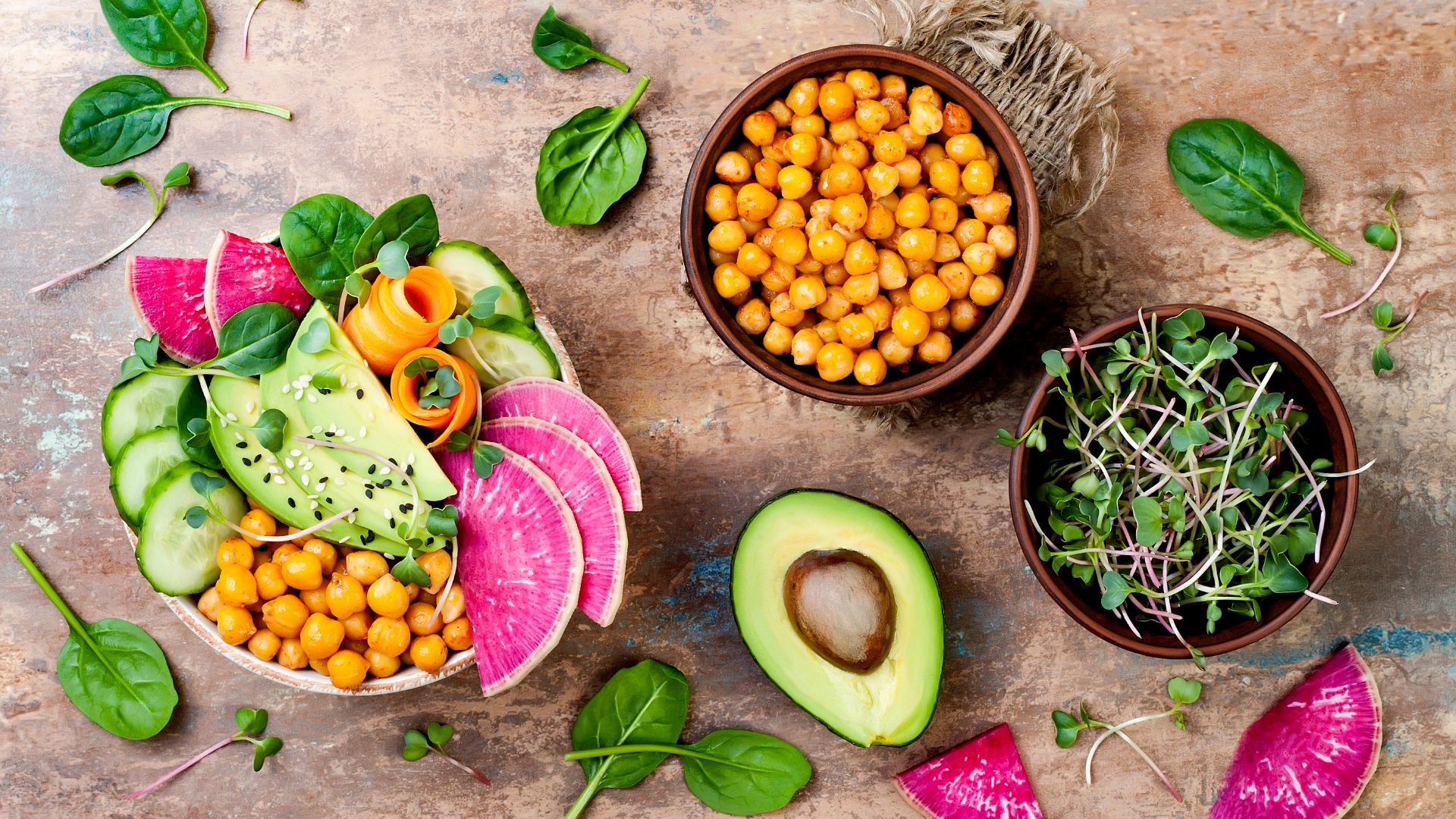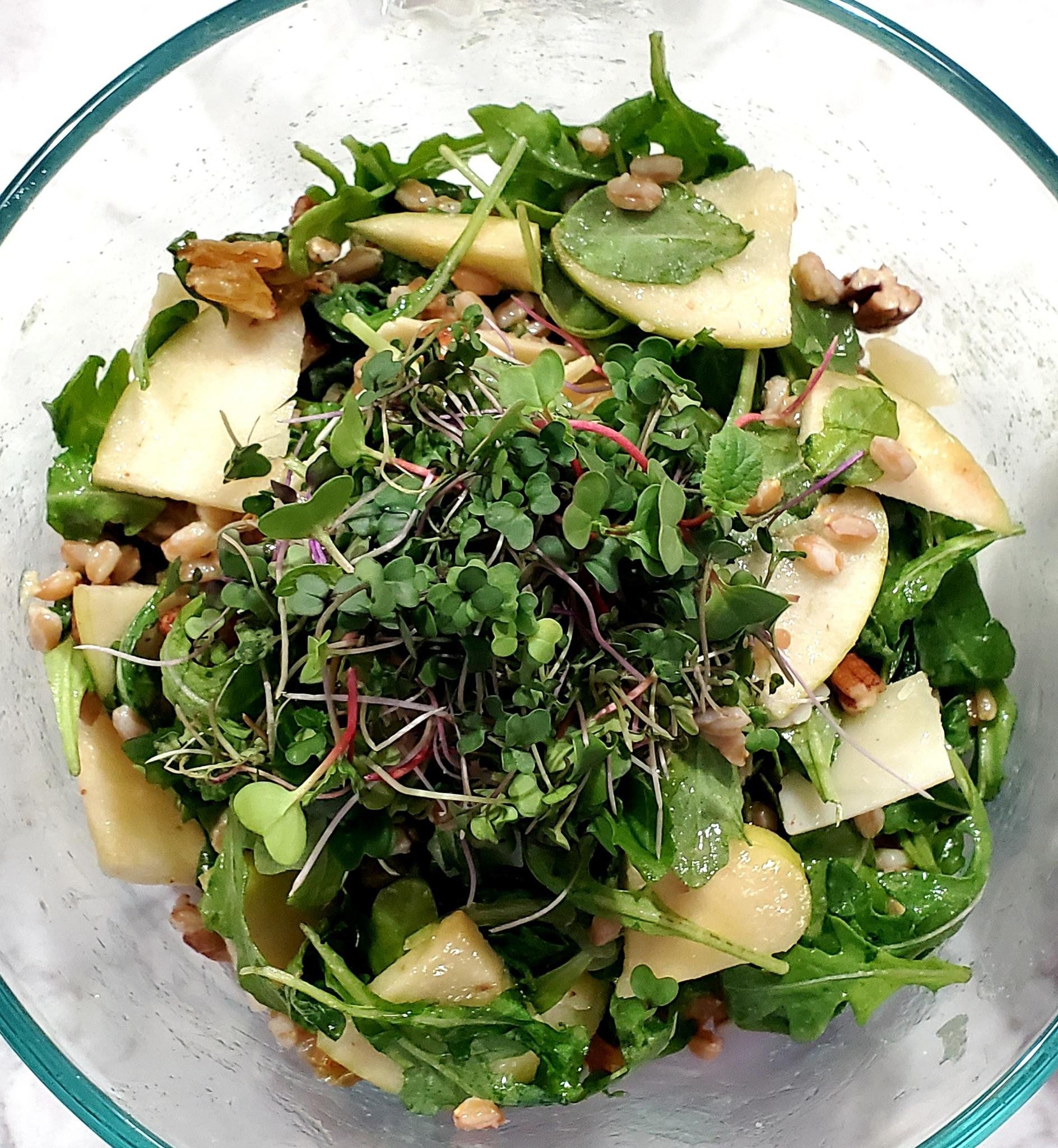nutritional value
Living Foods are a food source in Nature full of concentrated nutrients that can help maintain our bodies’ health and strengthen our immune systems.

"Let your food be your medicine, and your medicine be your food."
- Hippocrates
Button
Slide title
“The doctor of the future will give no medication but will interest his patients in the care of the human frame, diet and in the cause and prevention of disease."
- Thomas A. Edison
Button
Slide title
1 ounce broccoli microgreens = 1.4 pounds of broccoli florets
1.15 ounces of broccoli microgreens packs the same amount
of nutrition as 2.3 pounds of broccoli florets!
Button
The Living Food Lifestyle
By adding living foods to your diet on a daily basis, you can improve your overall health. Living foods, aka "nature's protectors" contain concentrated antioxidants in the form of vitamins, minerals, trace elements, enzymes, and plant pigments. These are our first line of defense against free radical damage and toxic build up. Unfortunately, most of the foods we consume are depleted of these essential nutrients. Eating living foods daily is a beneficial way to heal your body, help reverse any damage done and help protect against future deterioration.
Sustainable
Living foods are grown more sustainably compared to conventional agriculture practices. Microgreens use:
- Less water.
- Need no fertilizer or pesticides.
- Use less land via vertical farming.
Our compostable clamshell containers and growing trays are washed and reused while our growing medium is composted.
Locally grown food results in less transportation pollution and a more sustainable community.
Exceptionally Fresh
Living foods are inherently fresh because they are still living. Since our produce is harvested within 24 hours of delivery, you enjoy the benefits of superior quality, flavor and an enhanced shelf-life. You cannot obtain foods this fresh in most markets.
General Nutrition from Microgreens
-
VITAMIN C
The 2012 study on microgreens reported that even the microgreen sample that had the lowest levels of vitamin C contained a whopping 20 milligrams of vitamin C per 100 grams – that's almost twice the amount of vitamin C found in tomatoes!
-
BETA KEROTENE
Some microgreens appear to contain even more beta-carotene than carrots: 12 milligrams per 100 grams compared with 8 milligrams in boiled carrots, according to the 2012 study. The researchers who analyzed the beta-carotene content of microgreens found that these super-nutritious greens also provide other carotenoids such as lutein and zeaxanthin.
-
VITAMIN E
Back in 1967, a team of scientists from Yale University showed that young pea seedlings grown in light contain significant levels of tocopherol (vitamin E). Similarly, the researchers responsible for the 2012 microgreen study found substantial amounts of tocopherols in the tested greens. The amount of alpha-tocopherol and gamma-tocopherol combined ranged from 7.9 to 126.8 milligrams per 100 grams, with green daikon radish microgreens scoring the highest value in this analysis. For adults, the recommended daily allowance for vitamin E is 15 milligrams of alpha-tocopherol, meaning that eating just a small amount of daikon radish microgreens would cover your daily requirement for this important antioxidant vitamin.
-
VITAMIN K
Vitamin K also offers health benefits for humans by promoting normal blood clotting and preventing excessive bruising. Vitamin K also plays an important role in maintaining strong and healthy bones.
To reap the health benefits of microgreens, eat them immediately after harvest. Microgreens, like most other superfoods that are consumed fresh, begin to lose their nutritional value rapidly after harvest. Consider growing your own microgreens at home as this will allow you to decide exactly when you harvest your crop.
Another way to boost the nutritional value of recipes made with microgreens is to use extra-virgin olive oil or another healthy oil. The presence of oil helps improve the bioavailability of the fat-soluble nutrients in microgreens (carotenoids, vitamin E, and vitamin K).
These microgreens go great with any fresh seafood and are amazing on their own!!
Randy - Lewis Seafood
| Seed | Vitamin A | Vitamin B | Vitamin C | Vitamin D | Vitamin E | Vitamin K |
|---|---|---|---|---|---|---|
| Arugula | ✓ | ✓ (B9) | ✓ | ✓ | ||
| Broccoli | ✓ | ✓ | ✓ | ✓ | ✓ | |
| Collard | ✓ | ✓ (B9) | ✓ | ✓ | ||
| Dill | ✓ | ✓ | ✓ | ✓ | ✓ | |
| Pea | ✓ | ✓ | ✓ | ✓ | ||
| Purple Kholrabi | ✓ | ✓ | ✓ | ✓ | ✓ | |
| Radish | ✓ | ✓ (B6 & B9) | ✓ | ✓ | ||
| Red Amaranth | ✓ | ✓ | ✓ | ✓ | ✓ | ✓ |
| Scarlett Frills | ✓ | ✓ (B9) | ✓ | ✓ | ✓ | |
| Turnip | ✓ | ✓ | ✓ | ✓ | ✓ | |
| Wasabi | ✓ | ✓ (B9) | ✓ | ✓ | ✓ |
| Seed | β-Carotene | Ca | Cl⁻ | Cr | Cu | F | I | Fe | Mg | Mn | Mo | P | K | Se | Na | S | Zn |
|---|---|---|---|---|---|---|---|---|---|---|---|---|---|---|---|---|---|
| (Red) Amaranth | ✓ | ✓ | ✓ | ✓ | ✓ | ✓ | ✓ | ||||||||||
| Arugula | ✓ | ✓ | ✓ | ✓ | ✓ | ||||||||||||
| Broccoli | ✓ | ✓ | ✓ | ✓ | ✓ | ✓ | ✓ | ✓ | |||||||||
| Dill | ✓ | ✓ | ✓ | ✓ | ✓ | ✓ | ✓ | ||||||||||
| Pea | ✓ | ✓ | ✓ | ✓ | ✓ | ✓ | |||||||||||
| Radish | ✓ | ✓ | ✓ | ✓ | ✓ | ✓ | ✓ | ✓ | |||||||||
| Wasabi | ✓ | ✓ | ✓ | ||||||||||||||
| Scarlett Frills | ✓ | ✓ | ✓ | ||||||||||||||
| Superfood Blend Collard | ✓ | ✓ | ✓ | ✓ | ✓ | ||||||||||||
| (Purple) Kholrabi | ✓ | ✓ | ✓ | ||||||||||||||
| Turnip | ✓ | ✓ | ✓ | ✓ | ✓ | ✓ | ✓ |
| Seed | β-Carotene | Ca | Cl⁻ | Cr | Cu | F | I | Fe | Mg | Mn | Mo | P | K | Se | Na | S | Zn |
|---|---|---|---|---|---|---|---|---|---|---|---|---|---|---|---|---|---|
| Arugula | ✓ | ✓ | ✓ | ✓ | ✓ | ||||||||||||
| Broccoli | ✓ | ✓ | ✓ | ✓ | ✓ | ✓ | ✓ | ✓ | |||||||||
| Collard | ✓ | ✓ | ✓ | ✓ | ✓ | ||||||||||||
| Dill | ✓ | ✓ | ✓ | ✓ | ✓ | ✓ | ✓ | ||||||||||
| Pea | ✓ | ✓ | ✓ | ✓ | ✓ | ✓ | |||||||||||
| Purple Kholrabi | ✓ | ✓ | ✓ | ||||||||||||||
| Radish | ✓ | ✓ | ✓ | ✓ | ✓ | ✓ | ✓ | ✓ | |||||||||
| Red Amaranth | ✓ | ✓ | ✓ | ✓ | ✓ | ✓ | ✓ | ||||||||||
| Ruby Streaks | ✓ | ✓ | ✓ | ||||||||||||||
| Turnip | ✓ | ✓ | ✓ | ✓ | ✓ | ✓ | ✓ | ||||||||||
| Wasabi | ✓ | ✓ | ✓ |
Follow us
-
Its a flavor and nutrional thing... No chemicals/pesticides. Non-GMO seeds. No soil. 90% less water than traditional farming. - 🔗 in bio #Aeroponics #Verticalfarm #Urbanfarm #indoor #farm #Eatlocal #Farmtotable #Sustainable #Foodie #Eatlocal #Eatclean #nc #pesticidefree #chemicalfree #soilfree # chef #restaurant #foodtruckButton
-
Butter lettuce, "Mirlo" or Romaine...which do you prefer? #Aeroponics #Verticalfarm #Urbanfarm #indoor #farm #Eatlocal #Farmtotable #Sustainable #Foodie #Eatlocal #Eatclean #nc #pesticidefree #chemicalfree #soilfree #chef #restaurant #foodtruckButton
-
#Aeroponics #Verticalfarm #Urbanfarm #indoor #farm #Eatlocal #Farmtotable #Sustainable #Foodie #Eatlocal #Eatclean #nc #pesticidefree #chemicalfree #soilfree #restaurant #chef #foodtruckButton
-
Business cards...en route #aeroponics #verticalgarden #sustainable #healthylifestyle #healthyfood #healthy #health #foodie #food #eatlocal #grow #farmlife #plants #farm #healthylife #gardening #chef #healthyliving #Healthyeating #eat #organic #eatclean #restaurant #garden #ncButton
-
We decided to "grow up." #aeroponics #vertical #farm #lettuce #leafy #greens #ncButton
Subscribe to Get Our Special Offers
Subscribe to Get Our Special Offers
Thanks for subscribing. You'll be the first to hear about new items and special offers.
Please try again later.











